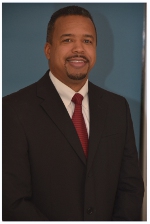 Senior Consultant at IOL Conversions, a Division of PremiumProduct Consultants, Marc Barbier discusses five ways surgery centers can step up operations to meet the changing demands of the healthcare market.
Senior Consultant at IOL Conversions, a Division of PremiumProduct Consultants, Marc Barbier discusses five ways surgery centers can step up operations to meet the changing demands of the healthcare market. 1. Emphasize internal and external communication. Many surgery centers are looking to increase patient volume, which has an impact on their bottom line. Make it easy for physicians' offices to schedule cases and communicate with patients about their surgery so everything is ready at go-time; you don't want to cancel cases at the last minute because an administrative detail was overlooked.
"Communication from the different disciplines is important," says Mr. Barbier. "The Physicians' offices will send over patient information and the ASC has to take responsibility for contacting the patient to make sure everything is ready for surgery."
Internal communication is also important to optimize efficiency at the ASC. Breakdowns in communication can cause clinical or administrative errors the surgery center can't afford to make.
"Patients always need clearance for surgery at the center, and sometimes data is overlooked or not delivered on time to the ASC," says Mr. Barbier. "This can pose risks for the patient and increase cancellations at the center."
2. Build a better culture from the top down. Ambulatory surgery centers should have a positive culture so patients, surgeons and staff members are satisfied with their experience. However, some ASCs are lacking this culture and staff members might not even want to be patients there.
"Administrators have a tough job ahead of them developing a culture where the staff feels proud of the ASC and can go above and beyond knowing there they are making an impact on their patients' lives," says Mr. Barbier. "The management should not compromise on safety, and that starts with improving communication. Morale also has to be very high."
Limited communication or ongoing disagreements between staff members and physicians contribute to a negative ASC culture. When an issue arises, strive to address it right away.
"There will always be disagreements between people at the center, but you want to address them and come up with solutions as soon as possible," he says.
3. Prepare for an expanded workload. Recent projections say the United States population will grow 18 percent by 2020, and the fastest-growing segment of this population includes older adults. These patients will likely need orthopedics, colonoscopy and other outpatient procedures.
"The increasing population will place a significant demand on surgical services," says Mr. Barbier. "We can expect around 14 percent growth in surgical fields that can be performed in the ASC. If we aren't developing strategies, culture and education to meet this expanded workload in the operating rooms, then we are really not going to have an industry or business to look to in the future."
4. Develop written protocol for tasks. Even at centers where staff positions are coveted, staff turnover occurs at a higher rate than desired. It takes time and resources for new staff members to fill their roles at surgery centers, and becomes even more difficult if there isn't a formalized protocol for them to follow.
"You might have a great employee who did a great job, but when that employee leaves and you train someone new there is not protocol in place," says Mr. Barbier. "You need something to tell new employees how to handle patient phone calls, gather key information ensure patients are ready for surgery."
There should be a protocol in place for communicating surgical information to relatives, reaching the patient if their primary contact information fails and collecting HIPAA and payment information in a timely fashion.
5. Restructure space within the ASC for improved efficiency. Many surgery centers, especially older ASCs, have less than 300-square-feet in the operating room, which causes issues with the new Class C certification and modern equipment purchases. Limited storage space can contribute to clutter and inefficiencies with materials management as well.
"When the operating rooms are small and the ASC has limited capacity for stocking supplies, the staff get into the practice of relying on the circulating nurse to leave the room to get supplies, which is inefficient," says Mr. Barbier. "Take on the task of creating a more common place for restructuring some of that space. At the end of the day, restructuring could impact the bottom line because the space is more suitable for patient flow."
The centers that have a physical design flow optimizing their case mix will outperform centers with limited or inefficient patient flow.
More Articles on Surgery Centers:
Expect an Increase in New ASC Development: Q&A With Rob Carrera of Pinnacle III
25 Statistics on Medicare Reimbursement in ASCs
5 Important Qualities to Improve ASC Scheduling
